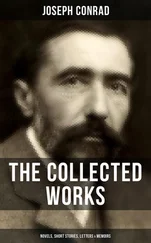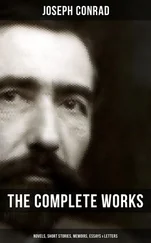*When his right arm broke for the second time, it was amputated. It was said that after the operation in the morning, Loudon was back downstairs in the afternoon dictating to his wife Jane.
Paxton was now in his thirtieth year. He now had four children – his third daughter was born that October and named in honour of the future Queen – a successful magazine, a growing reputation and the confidence of his employer? The gardens at Chatsworth were organised and flourishing. Then, at the quiet beginning of the following year (1833), the Duke had one of his only disputes with Paxton, who was not exact in my accounts … He says he must have discovered his mistakes but I doubt that and it makes me very glad to have kept my accounts as perfectly as I do.’ In the light of his future vast debts, the Duke was delusional over his own accounting abilities. Paxton may not have been a great deal better (though he certainly had to deal with more complicated accounts on a daily basis, ably assisted by Sarah) and it is very possible that from 1831 he was taking private maths lessons in a neighbouring village. Characteristically, all was forgotten only a fortnight later as the Duke whisked Paxton off on a tour of great country house gardens, ostensibly to further the gardener’s education but, one also suspects, in order to share with him their mutual passion for all things horticultural.
They travelled together by coach, and it was the first time Paxton had been away from Sarah for an extended period. Coach travel was very soon to be overtaken and outdated by rail. During these early years of the 1830s, the great trunk lines were developing, including the London to Birmingham that very year. The days of master and man together, and of the enclosure of the coach, were nearing their end.
Their first stop, Dropmore – about thirty miles outside London in Buckinghamshire – was owned by Lady Grenville and maintained by her gardener Philip Frost. Lady Grenville was possibly the first gardener to challenge the sterility of landscape by introducing bedding, cutting into the grass to provide space for the flood of colour available from showy displays of the many new plants now widely cultivated. There, they also found glorious examples of pines and they were astonished to see the Araucaria excelsa planted out of doors and thriving, and American laurels arranged as if wild. They went on to Althorp, Paxton stealing ten minutes after midnight to write to Sarah, bemoaning his separation from her and his ‘little family’, his loneliness mitigated only by the Duke who ‘pays me the greatest possible attention’. At Windsor they were depressed by the wretched state of the orange trees, but again the Duke ‘took great pains to explain everything to me’. Sarah hated their being apart, and was clearly distressed not to hear from him more often, but Paxton and the Duke were on the move and letters took time to arrive. Ultimately, she did not have to wait long for her ‘dearest love’, the Duke sprained his knee and was forced to return to London.
When Paxton arrived back at Chatsworth he sent flowers to the Duke convalescing at Chiswick, who was so delighted with them that he sent them on to the Queen. His estimation of Paxton continued to rise as his own study of botany matured – possibly not to the appreciation of his gardener at Chiswick where the Duke said that he now saw and understood the ‘bad management of my plants’. Between 1830 and 1835, Paxton spent over £ 2,500 on plants, trees and seeds on behalf of the Duke. Many were greenhouse plants, but purchases also included the more obvious tulips, auriculas, carnations, camellias, roses, lilies, and even primroses, obtained from local Derbyshire nurseries as well as the famous London and continental establishments.
With the Duke fit again and en route to Italy, taking with him horticultural gifts for many of his friends, Paxton continued to experiment at Chatsworth. In 1833, in contemplation of continuing his experiments by building a new range of hothouses, he revisited the possibility of erecting metal structures, drawing up plans and sending to Birmingham and Sheffield for estimates. But he was horrified by the enormous costs – both estimates were over £ 1,800 – and ‘I at once set about calculating how much the range would cost if built of wood … I was able to complete the whole range including masonry (which was omitted in the metal estimates) for less than £ 500.’ Next he considered how to design a house into which the greatest possible amount of light would be admitted in the morning and afternoon, while minimising the violence of the midday sun.
Loudon had already set out the principle of fixing glass at angles on a ‘ridge and furrow’ construction and it now occurred to Paxton that his wooden roofs would admit much more light if the sashes were so fixed. It was an insight that proved to be one of the most important mental leaps of his career. He reinvented and refined Loudon’s nascent principle to such a perfect model that it became his signature practice in glass roofing, a revolution in glasshouse design that would last for over a generation. The principle worked on the basis that light in the mornings and evenings, when the sun was low in the sky, would enter the house without obstruction, presenting itself perpendicularly to the wide surface of the glass. Conversely, the strength of the midday sun was mitigated by the fact that it hit the glass at a more oblique angle.
Fired by his success on small buildings, Paxton was now inspired to build a new glasshouse of considerable dimensions to accommodate the Duke’s growing orchid collection. The new house was to be 97 feet 6 inches long and 26 feet wide – a considerable span – made up of 15 bays, and constructed again of wood supported only by 16 slender, reeded cast-iron columns. The floor was made of slatted board, allowing earth to be swept through, wooden rafters were entirely abolished and the sash bars were made lighter than ever before. In addition, the front columns were to be hollow, with a metal pipe inserted to act as a conduit for the water from the roof, directing it to a drain laid in the gravel walk outside. The angled panes of the roof were set fast, with the least possible unsightly and uneconomical overlap, and, since the sash bars were grooved, less putty was needed. The panes at the front and end could be easily slid aside, allowing entry to any part of the house without the need for a door and maximum possible ventilation. In this new house, Paxton arrived at a system of construction the principles of which would now underpin the design of every subsequent wood and glass structure that he built. Notwithstanding the tax on glass, he pronounced it to be economical, costing around twopence a cubic foot.
During the five years from 1830, Paxton spent the considerable amount of £ 3,409 on maintaining and constructing greenhouses, mushroom houses, forcing houses, a strawberry house, a large pine house, a melon and cucumber house, several vine ranges and a peach house – all of glass, wood and iron. He was not working in isolation but within a contemporary fashion for experimentation with the design and structure of glass buildings, often on a massive scale. Loudon, for example, designed a radical building with massive glass domes for the Birmingham Horticultural Gardens, which was widely publicised though never built. Demonstrating just how hard these types of building were to erect, the ‘Antheum’ in Hove, with its 60 foot high dome spanning 170 feet, swerved into famously serpentine lines when its scaffolding was removed, before collapsing within the month. Paxton’s own experiments though were impelled by the needs of utility, stability, convenience, economy and the desire to overcome technological limitations within the constraints imposed by the glass tax, rather than aesthetics of design or the development of his own reputation. They succeeded in their aims entirely.
Читать дальше











